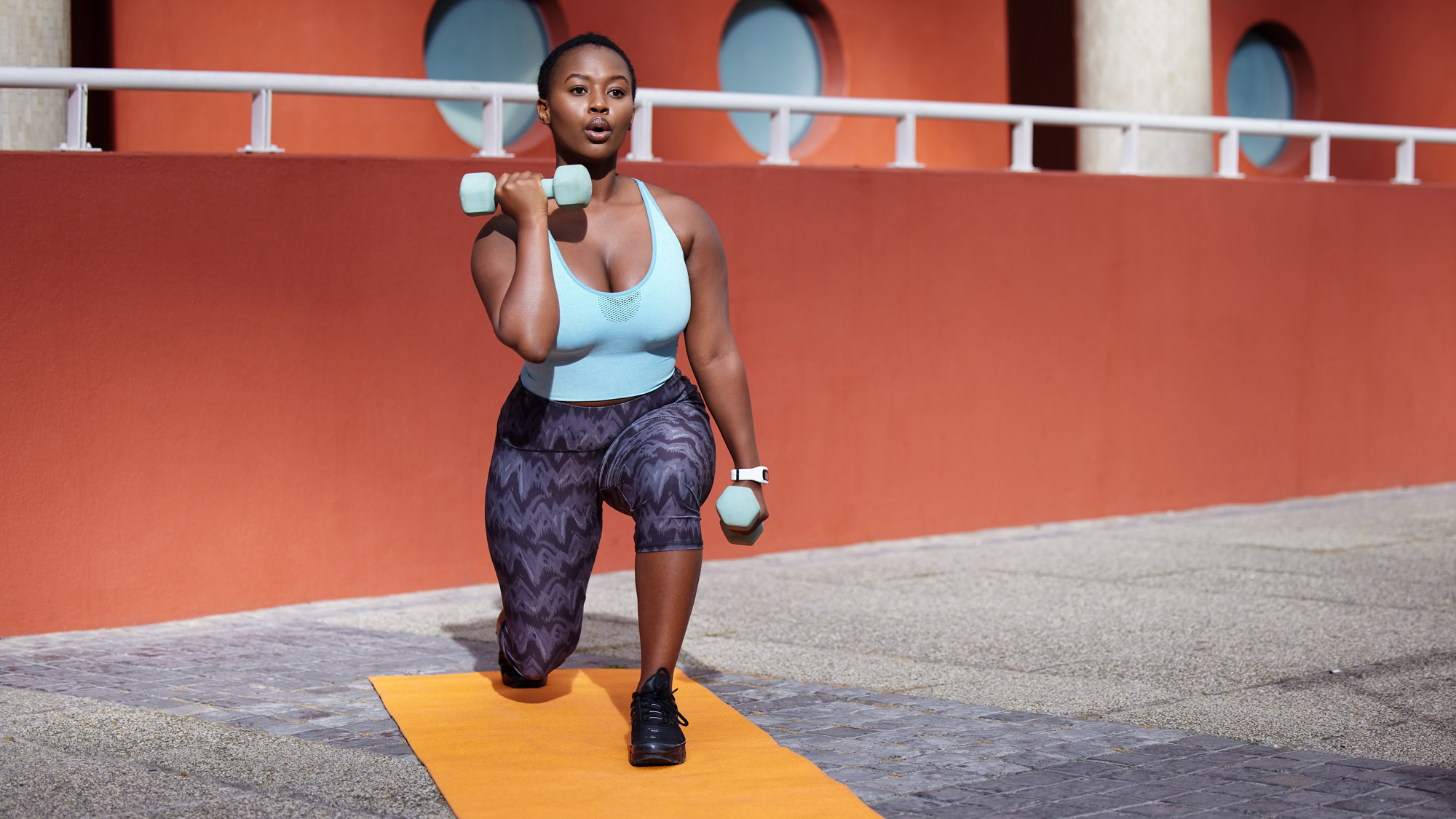Build muscle and burn fat with this stress-busting 15-minute dumbbell home workout
Just 15 minutes of high-intensity exercise can protect your mind and improve your mood


Why do you exercise? Maybe it's to work on your mobility, improve your health, or build muscle. These are all important and very worthy reasons to work out. But regular exercise, even for just 15 minutes a day, can improve your mental health too.
Whether you choose to go for a casual walk, fit in a short HIIT workout early in the day, or build muscle with a set of the best adjustable dumbbells, you'll keep your body active and look after your mind at the same time.
You don't have to train for hours to feel the benefits either. According to the ASICS Uplifting Minds Study, just 15 minutes of exercise each day can have a significant impact on your mental wellbeing.
If you have 15 minutes to spare, you can start training to protect your mind and strengthen your body with this quick dumbbell workout from Joe Wicks, best known as The Body Coach.
He guides you through all five moves to get the technique right, helping you get the most from each exercise and avoid injury, which is especially important when working with weights.
Wicks' routine includes some bodyweight workout staples—push-ups and burpees—and strength training moves like dumbbell front squats, bicep curls, and dumbbell reverse lunges.
Watch The Body Coach's 15-minute dumbbell workout
The aim is to do 10 repetitions of each of the five exercises, then repeat the cycle as many times as you can in 15 minutes. This is a training style known as an AMRAP workout—or As Many Rounds As Possible.
Start your week with achievable workout ideas, health tips and wellbeing advice in your inbox.
That's why it's an ideal workout for beginners and more experienced exercisers, as you get to dictate the pace. Plus, it makes it easy to track your progress over time, as you'll gradually be able to do more during the short session.
Keeping the intensity up throughout the routine will raise your heart rate, increase your metabolism, and burn energy throughout the day. If that sounds similar to a HIIT workout, that's because it is.
High-Intensity Interval Training (HIIT) also gets your heart pumping, but you work out in quick bursts (usually between 30 and 45 seconds), then take a short break before tackling the next exercise.
While the ASICS research discovered that just 15 minutes of exercise can protect your mind, a separate study published in the journal Frontiers in Psychology found the best style of movement to improve your wellbeing.
According to the study, HIIT decreases anxiety, stress, and depression, while it also increases resilience, the ability to cope with challenging or stressful situations without long-term effects.
Adding regular physical activity into your day is a great way to protect your mental health, but it's not the only way. There are plenty of low-cost self-care ideas that you can do to look out for your mind without breaking the bank.

James is a London-based journalist and Fitness Editor at Fit&Well. He has over five years experience in fitness tech, including time spent as the Buyer’s Guide Editor and Staff Writer at technology publication MakeUseOf. In 2014 he was diagnosed with a chronic health condition, which spurred his interest in health, fitness, and lifestyle management.
In the years since, he has become a devoted meditator, experimented with workout styles and exercises, and used various gadgets to monitor his health. In recent times, James has been absorbed by the intersection between mental health, fitness, sustainability, and environmentalism. When not concerning himself with health and technology, James can be found excitedly checking out each week’s New Music Friday releases.